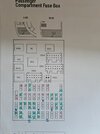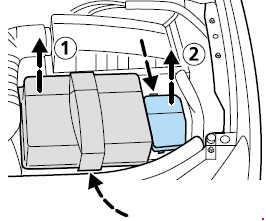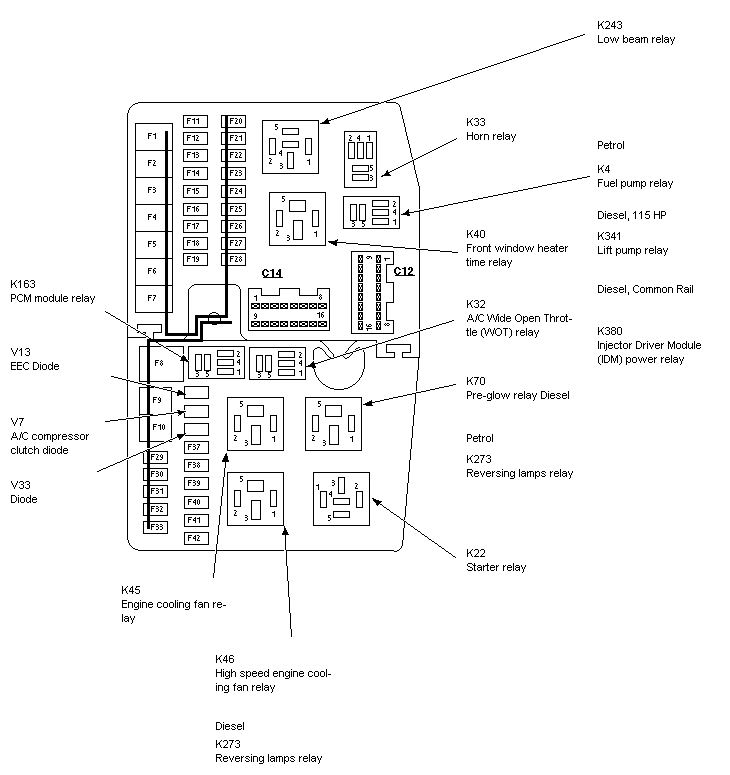I must admit I'm no expert in the way of the multimeter. I had to hop on YouTube to see which ports to connect the red & black probes so that should give you an idea. I can copy someone who knows what they're doing but that doesn't mean I know what I'm doing.
So I worked on the advice given that an empty port/slot is better than an occupied one. I set about testing them & first one was a permanent live as it threw up 12v straight away so that ticked that box.
Tested the others & I think all bar one read 0.00 (the other being 12v like the first).
So I then inserted the key, turned the ignition on & went back to test the slots that were showing 0.00v expecting them to now read 12v.
They didn't. They read 0.03v.
I could go and use one of the other slots that will be ignition-live like the cigarette lighter fuse for ease but the issue is I have other things I want to hardwire in like I asked here.
I want to be wiring in a charger cable for my phone - so basically it will be a 12v female socket hardwired to the fuse box with a fast charger adapter connected to the 12v female socket & then a USB cable running behind the dash & out in the bottom right corner of the windscreen to charge my phone in its holder for when I'm on a long drive & needing Google Maps or when I get in the car & my phone is low on juice.
Then there's also the Mio Mivue 618 cam I'd take from the front & put in the rear which would need hardwiring in.
If I couldn't do all 3 then the priority would be the VIOFO A119v3 up front, which is what this thread here was started for. After that would come the phone charger & lastly would be the Mio dash cam in the rear. I put this last as depending on the release of a VIOFO A229 Pro, I would then switch out the A119v3 for a 2-bird-1-stone cam setup.
If after reading this you're wondering where my question is - then it's about the 0.03v. If it's not permanent live, as it read 0.00v then why does it read only 0.03v when the ignition is on?
So I worked on the advice given that an empty port/slot is better than an occupied one. I set about testing them & first one was a permanent live as it threw up 12v straight away so that ticked that box.
Tested the others & I think all bar one read 0.00 (the other being 12v like the first).
So I then inserted the key, turned the ignition on & went back to test the slots that were showing 0.00v expecting them to now read 12v.
They didn't. They read 0.03v.
I could go and use one of the other slots that will be ignition-live like the cigarette lighter fuse for ease but the issue is I have other things I want to hardwire in like I asked here.
I want to be wiring in a charger cable for my phone - so basically it will be a 12v female socket hardwired to the fuse box with a fast charger adapter connected to the 12v female socket & then a USB cable running behind the dash & out in the bottom right corner of the windscreen to charge my phone in its holder for when I'm on a long drive & needing Google Maps or when I get in the car & my phone is low on juice.
Then there's also the Mio Mivue 618 cam I'd take from the front & put in the rear which would need hardwiring in.
If I couldn't do all 3 then the priority would be the VIOFO A119v3 up front, which is what this thread here was started for. After that would come the phone charger & lastly would be the Mio dash cam in the rear. I put this last as depending on the release of a VIOFO A229 Pro, I would then switch out the A119v3 for a 2-bird-1-stone cam setup.
If after reading this you're wondering where my question is - then it's about the 0.03v. If it's not permanent live, as it read 0.00v then why does it read only 0.03v when the ignition is on?




